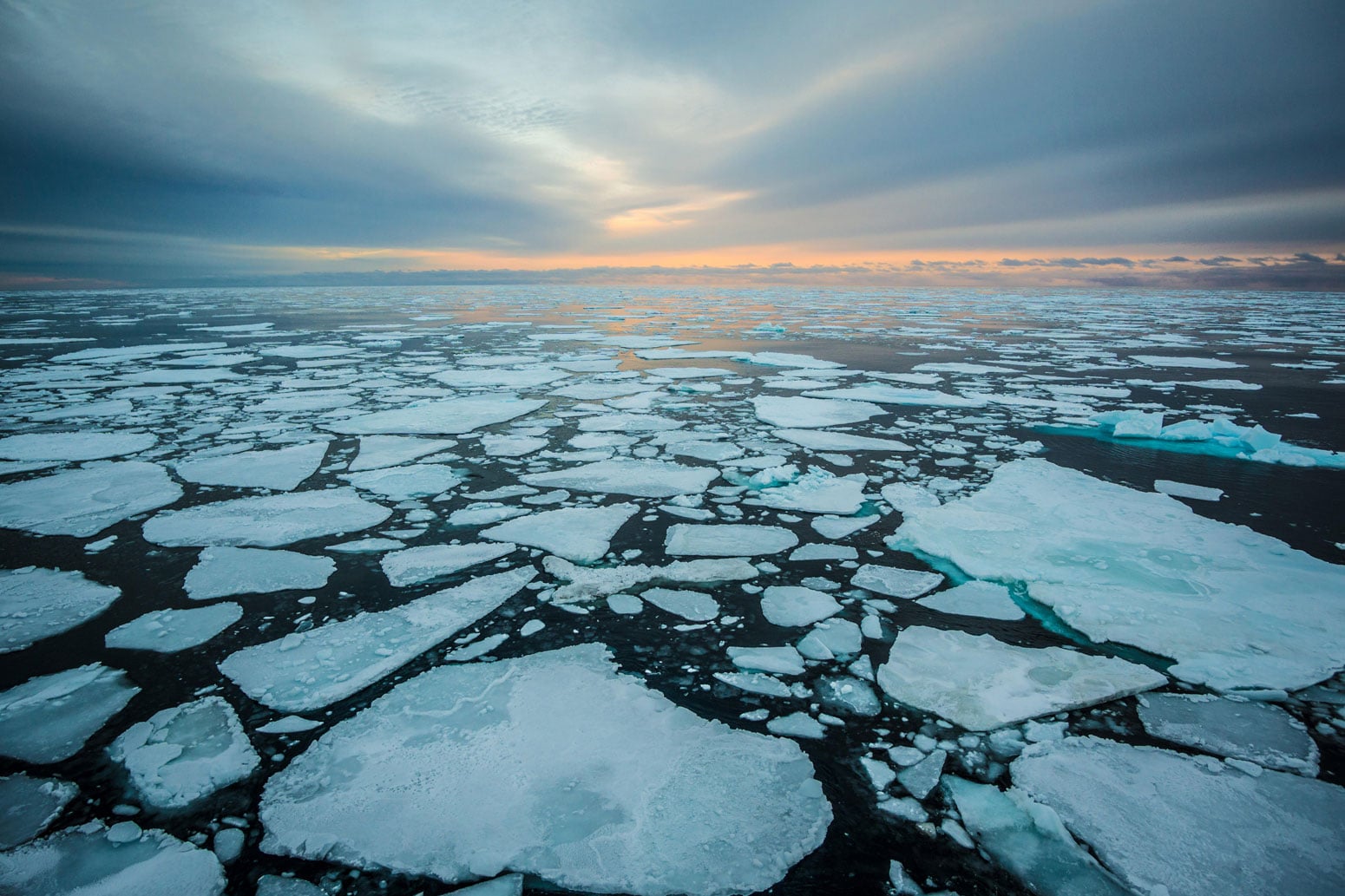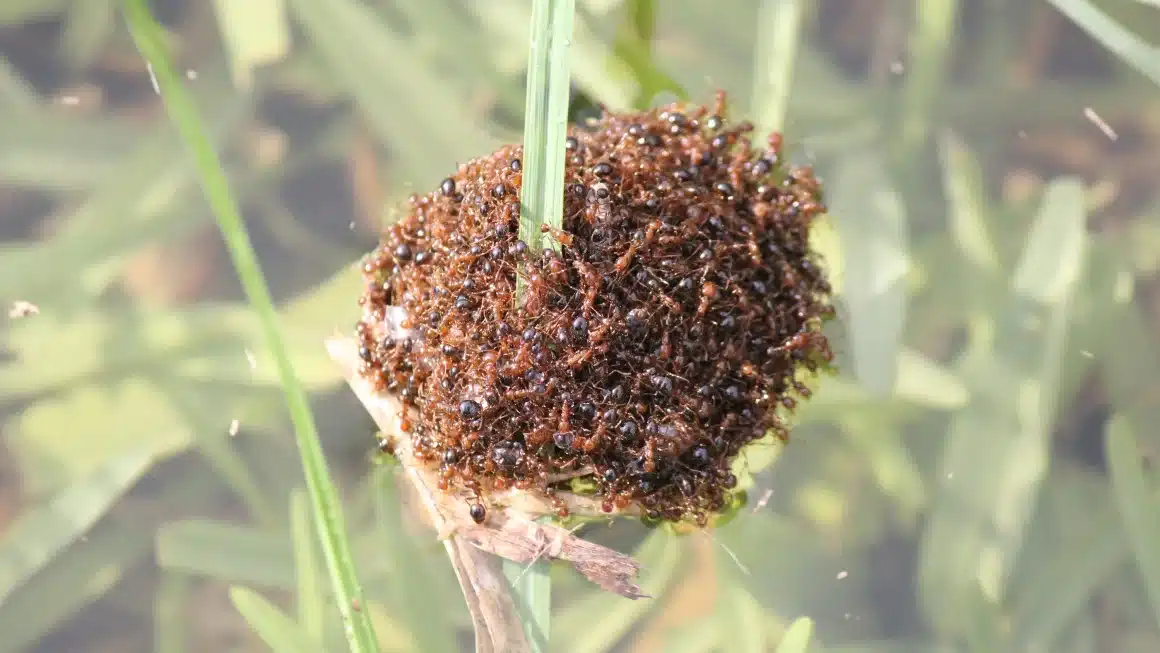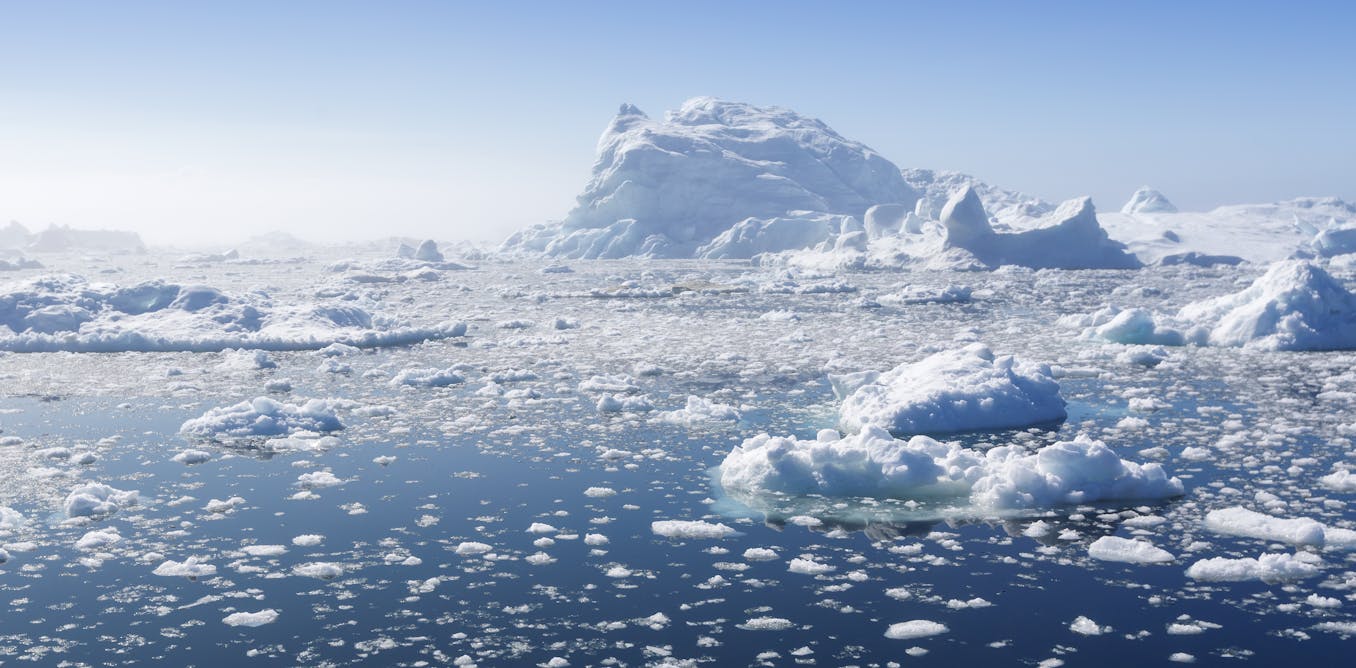Travel
Arctic Sea Ice Thins In 2 Big Jumps, And Now More Vulnerable

According to a new study, climate warming targeted the critical thickness of the Arctic sea ice in two abrupt huge gobbles rather than gradually.
According to the study that underlines the significance of two large “regime shifts” that altered the character of the Arctic, sea ice swiftly lost more than half its thickness a little more than 15 years ago, becoming weaker, more susceptible to melting, and less likely to return.
Both 2005 and 2007 saw those significant bites. Before, it was challenging to leave the Arctic due to the older and misshaped sea ice. This allowed the arctic region to serve as the globe’s air conditioner during hotter summers. Yet as the ice in the Arctic gets younger, thinner, and easier to push out, it puts that vital cooling mechanism at greater risk, according to the study’s principal author.
Until 2007, 19% of the Arctic sea ice was at least 13 feet (4 meters) thick, making it taller than most elephants. Today, only 9.3% of the ice is at least that thick. The study published in Wednesday’s issue of Nature also found that the average ice age had decreased by more than a third, from 4.3 years to 2.7 years.
“The long-term impact of climate change on the Arctic sea ice” was cited.
A sea ice expert at the Norwegian Arctic sea Institute named Hiroshi Sumata is the study’s principal author. “Ice is considerably more vulnerable than before because it’s thinner; it may quickly melt,” he added. He asserted that all life forms in the Arctic depend on thicker sea ice.
The finding demonstrates “how the Arctic sea ice environment has experienced a fundamental transition,” according to Walt Meier, a scientist at the National Snow and Ice Data Center who wasn’t involved in the study. The reason the sea ice has yet to recover from those significant decreases is explained in this research.
Because satellites can easily assess the extent of Arctic sea ice, which is easier to measure than volume, previous studies focused more on that aspect of the ice’s distribution. Sumata overcame the difficulties of measuring from space by concentrating his observations on that ground-based choke point, where Greenland ultimately pushes 90% of the ice out of the Arctic through the Fram Strait.
He discovered that the first ice was becoming thinner and more uniform as it became younger, making it simpler to push across the Fram Strait. According to Sumatra, younger, sleeker ice is easier to force out of the Arctic than older, thicker ice because it lacks the odd edges and shapes that make thicker ice more difficult to force out.
The National Snow and Ice Data Center’s Mark Serreze, who was not involved in the study, noted that although scientists were already aware that sea ice was becoming thinner and less extensive, this “flushing” is crucial.
This cycle of warmer water made it more difficult for arctic sea ice to develop, survive, and thicken.
In an email, Serreze explained that because of these flushing episodes, the Arctic Ocean’s ice had had less time to develop and is more resistant to melting off. Yet because the Arctic is rapidly rising, it’s probably too late to hold out hope that the Arctic Ocean will recover.
According to Sumata, the periods of warm, expansive, ice-free open water in the Arctic in 2005 and 2007 likely exceeded those of previous summers. The dark ocean absorbs the sun’s heat and warms up while the white ice reflects it, a phenomenon known as ice-albedo feedback. According to him, this cycle of warmer water made it more difficult for arctic sea ice to develop, survive, and thicken.
Once the water has absorbed that heat, it isn’t easy to cool off. So, more significant warming shifts could occur in the future, making the ice thinner and weaker, but scientists warned against expecting quick cooling shifts that will cure the planet.
Sumata and Serreze predict that those unexpected warm leaps will occur shortly and are astonished that they haven’t yet. In 20 to 30 years, according to recent predictions, areas of the Arctic sea Ocean will be free of ice during the summer.
Even to regions hundreds of kilometers away that don’t freeze up, the thickness of the sea ice and the general health of the Arctic are vital, according to Sumatra.
The north and south poles act as the planet’s air conditioning system and radiator. Therefore it will impact the entire planet, according to Sumatra. And what we saw suggests that the air conditioner isn’t functioning properly.
SOURCE – (AP)
Business
‘Inexcusable.’ Ryanair Says It May Have To Raise Fares This Summer Because Of Boeing

Ryanair may be forced to reduce flights and boost costs during the high summer this year because crisis-hit Boeing cannot deliver the promised planes.
Michael O’Leary, the CEO of Europe’s largest airline by passenger volume, stated in a widely reported press event Friday that air tickets could climb by up to 10% due to delays in aircraft delivery.
Boeing has faced additional safety and quality issues since early January when a piece of the fuselage on a 737 Max 9 operated by Alaska Airlines broke off mid-flight. Further issues have surfaced with some 737s afterwards, affecting Boeing’s production timetable. It has also postponed certification for two new versions of the plane.
‘Inexcusable.’ Ryanair Says It May Have To Raise Fares This Summer Because Of Boeing
According to O’Leary, Ryanair previously expected Boeing to deliver 57 Max 8-200 jets by the end of April. On Friday, the CEO stated that he was “pretty sure” the airline would acquire between 30 and 40 planes but “far less confident” about receiving between 45 and 50.
“We don’t really know how many aircraft we’re going to get from Boeing,” he said, according to Reuters.
A Ryanair representative told CNN that the stories about O’Leary’s media briefing were correct and that the business had nothing to offer.
O’Leary said that if only 40 aircraft are delivered, Ryanair may have to “announce some minor schedule cuts” by the end of March. This might increase plane fares by 5% to 10% this summer.
‘Inexcusable.’ Ryanair Says It May Have To Raise Fares This Summer Because Of Boeing
Demand for international travel increased dramatically last year, prompting airfares to skyrocket worldwide. Ryanair’s Ireland-listed shares have increased 69% since the beginning of 2023.
“It is inexcusable.” Boeing will attempt to justify its actions. “I believe we will receive some modest compensation from Boeing,” O’Leary added. “At the point our focus is getting the bloody aeroplanes.”
A Boeing (BA) spokeswoman stated that the business contacted customers about modifications to its delivery timetable. “We (are taking) the necessary time to make sure that every aeroplane we deliver is high quality and meets all customer and regulatory requirements.”
‘Inexcusable.’ Ryanair Says It May Have To Raise Fares This Summer Because Of Boeing
“We genuinely regret the impact this is having on our valued customer, Ryanair. We’re striving to address their issues and implement a thorough plan to improve 737 quality and delivery performance.”
O’Leary’s remarks come nearly a month after he voiced “a lot of confidence” in Boeing’s management. He congratulated Boeing’s CEO and CFO, David Calhoun and Brian West, for their efforts to turn around the company. “I think safety is their number one byword,” he remarked in a video uploaded to Ryanair’s website.
SOURCE – (CNN)
Entertainment
Rio De Janeiro Is Betting On Carnival For ‘Cooler’ Parties – And A Better Brazil

Rio’s government made its largest investment yet in 2024’s Carnival. If it pays off, everyone benefits.
Rita de Cassia Oliveira takes a quick break to rearrange a display of multicoloured earrings before returning to serve a group of tourists. They are choosing dazzling shorts and glittering bikini tops for this year’s Carnival street festivities. During this time, Oliveira trades her typical swimwear products for Carnival clothes, and she expects February’s income to increase compared to previous months.
“It’s the best time of year for those who work on the streets,” she explains, setting up pots of glitter at her outdoor shop on a popular Copacabana street corner.
Rio De Janeiro Is Betting On Carnival For ‘Cooler’ Parties – And A Better Brazil
Shopping in Rio de Janeiro picks up in the weeks leading up to Carnival. The festivities draw many national and international tourists to see the world-famous parades and block parties. But it’s more than simply a good time for Brazil; it’s also a moneymaker. Tourists spend millions during Carnival, creating thousands of temporary jobs in the city.
Rio de Janeiro is expected to earn a record 5.3 billion reais (£846 million; $1.06 billion) from tourism-related activities in February this year. The state government has invested the highest in Carnival preparations and celebrations for 2024, totalling 62.5 million reais. The infusion of capital has resulted in a record number of jobs and strengthened infrastructure to support tourism, and it is expected to provide long-term socioeconomic changes to the city.
“For every one Brazilian real invested in tourism in Rio, it brings a three to fourfold return,” says Ronnie Costa, president of Rio’s tourism board Riotur. The Carnival investment is well-timed. Brazil welcomed record numbers of international tourists last year, bringing $6.9 billion (£5.5 billion) into the Brazilian economy, a 1.5% increase over the previous best income achieved in 2014 when Brazil hosted the World Cup. The country’s Tourism Plan aims to reach $8.1 billion (£6.4 billion) by 2027.
In Rio, the government has been spending on infrastructure, security, and mobility to attract visitors. This includes more flights into the city’s major international airport and enhanced police presence in tourist areas. This year, Rio will have more than 12,000 military police officers on duty during Carnival, a 5% increase from the previous year.
Officials hope this will help to counteract Rio’s reputation for violent crime. The National Confederation of Commerce (CNC) reported that this image cost the state 3.3 billion reais (£536 million; $660 million) in tourism in 2023.
“The city needs to enable decent infrastructure to receive all these tourists, so the City and Rio State are making investments to create a good, positive experience,” says CNC’s chief economist, Felipe Tavares.
Rio has also invested 40.5 million reais (£6.5 million; $8.1 million) in samba schools, the clubs that organise the city’s iconic parades. The schools open to the public several weeks before Christmas, allowing visitors to view and participate in singing music, and dancing rehearsals.
“When schools have more money, they may spend on equipment, costumes and floats. Tourists will notice something neater, tidier and more sophisticated; a cooler avenue and cooler parties; and a better day-to-day experience’, says Carlos Werneck, president of the tourism organisation Visit Rio.
Rio De Janeiro Is Betting On Carnival For ‘Cooler’ Parties – And A Better Brazil
In addition, they’ve committed tens of millions of reais to prolong Carnival celebrations beyond the statutory five-day period. The capital has already helped pay for the typical block parties on weekends soon after New Year’s and will support the street celebrations that continue in the weeks after the parades, providing tourists with a Carnival experience in Rio during the first quarter of the year.
Tourism officials from Riotur and Visit Rio say there may also be plans for a Carnival-style celebration in the middle of the year.
Many Rio locals rely on the celebrations and subsequent visitors for income. According to Costa, investments in 2024’s Carnival have created 50,000 jobs, most benefiting socially vulnerable populations from low-income districts. Samba schools employ hundreds of seamstresses, musicians, performers, and organisers.
Full-time employees in Brazil are often paid an additional month’s income at the end of the year, known as the “thirteenth salary”. According to Oliveira, a street vendor in Copacabana, Carnival earnings are the equivalent of this incentive and an opportunity to pay off obligations and save. Rio officially registered 15,000 street vendors to work during block celebrations and parades this year, up from 10,000 last year.
Rio De Janeiro Is Betting On Carnival For ‘Cooler’ Parties – And A Better Brazil
“Carnival represents an important source of extra income for independent street vendors to increase their revenue during this period,” says Bruno Guerra, director of popular parties at Dream Factory, an event and entertainment firm. “This extra money helps support their families and pay additional expenses, often playing a fundamental role in the financial stability of these independent street sellers.”
However, Tavares emphasises that it is not just about profit. “When we have such a large development in Carnival and tourism, we see significant social improvements in the region,” he said. “Rio is getting more professional in the Carnival and tourism sectors. More people in tourism speak English and Spanish.
You can see options in two or three languages. Rio’s entire city and economy are adjusting to become an international and national tourism destination.”
In February, São Paulo state is set to receive a record 16.2 billion reais (£2.6 billion; $3.25 billion) in tourism revenue, over three times that of Rio state. Tavares attributes this to the region’s vastness. “We are seeing destinations that were not traditional for Brazilian Carnival, such as the states of Paraná, Rio Grande do Sul, Minas Gerais and São Paulo growing a lot every year.”
This is a beautiful time for Rio’s street vendors, such as Oliviera. She states, “It’s like Christmas for us.”
SOURCE – (BBC)
World
How Deadly Fire Ants Are Surviving Australian Floods: A Perilous Journey

Red fire ants are constructing rafts to travel on flood waters in Queensland, northeastern Australia, as extreme weather threatens the highly invasive species’ expansion across the country.
“The recent heavy rainfall and wild weather in the region could accelerate the spread of fire ants, one of the world’s worst invasive species,” Reece Pianta, advocacy manager at Australia’s Invasive Species Council (ISC), said in a statement Tuesday.
“Fire ants are more active before or after rain, and they can form large floating rafts that move with water currents to establish footholds in new areas,” Pianta said, advising locals to be vigilant. The ISC posted a video on social media showing fire ants migrating in raft formation.
“It’s incredibly simple to do your part. Just snap a picture of any unusual ants and report them,” he said.
How Deadly Fire Ants Are Surviving Australian Floods: A Perilous Journey
Queensland has experienced severe weather and flooding in recent weeks. Last month, the remnants of Tropical Cyclone Jasper poured severe rains to Cairns, cutting the city off. Flooding also stranded many of the more than 150,000 residents on their rooftops.
According to ISC modelling, fire ants will spread to “every corner of Australia” if the Queensland outbreak is uncontrolled.
The ISC stated that it just obtained a 70 million Australian dollar ($46 million) four-year commitment from Victoria to support the national fire ant eradication effort. Pianta believes eradication is still attainable.
Solenopsis invicta, a red imported fire ant native to South America, is an omnivorous species that damages crops and livestock. Its deadly sting causes pustules and allergic responses and can be fatal to humans. Over the past century, it has expanded over the United States, Mexico, the Caribbean, China, and Australia. It made its maiden appearance in Europe last year.
How Deadly Fire Ants Are Surviving Australian Floods: A Perilous Journey
Australia’s first fire ant outbreak occurred in 2001, according to the ISC. According to the statement, the country has brought seven infestations under control, stretching from Queensland’s capital, Brisbane, to the border with the neighbouring state of New South Wales (NSW), to first contain and then eradicate the infestations.
However, in November 2023, the ants were discovered in New South Wales, raising concerns that they could spread to the Murray-Darling river basin and out of control.
At the time, Tara Moriarty, the Minister for Agriculture in New South Wales, stated that “red imported fire ant are a terrible invasive pest, which cause serious social, economic, and environmental harm.”
How Deadly Fire Ants Are Surviving Australian Floods: A Perilous Journey
“Our teams are focused on limiting further spread, and encouraging reporting and compliance through a targeted communications campaign,” she said.
Red ants can spread swiftly, but human activities, such as cargo containers or shipments of potted plants or soil, usually exacerbate an infestation.
SOURCE – (CNN)
-
Entertainment5 months ago
Robert Downey Jr. Won’t Be Returning To The Marvel Cinematic Universe As Tony Stark
-
Politics5 months ago
Unveiling the Power and Influence of The Conservative Treehouse
-
Sports4 months ago
Saints’ Aggressive Play-Calling Ends Up Coming Back To Hurt Them In Loss To Rams
-
Celebrity5 months ago
Norman Lear, Producer Of TV’s ‘All In The Family’ And Influential Liberal Advocate, Has Died At 101
-
Innovation5 months ago
Sony Debuts First PS5 Controller For Disabled Gamers
-
Business4 months ago
Nike Says It Will Cut $2 Billion In Costs In A Major Warning For Consumers


/cdn.vox-cdn.com/uploads/chorus_image/image/59038525/GettyImages_498047592.0.jpg)

























































